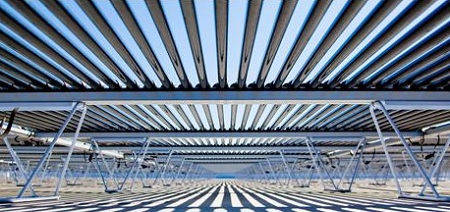By Cai Steger, NRDC
Last week, Representatives Fred Upton and Cliff Stearns stated the following regarding the Solyndra bankruptcy:
“President Obama’s signature green jobs program went from a darling of the administration, to bankruptcy, to now the subject of an FBI raid in a matter of days…Irresponsibly choosing winners and losers on projects like Solyndra is a perilous and often doomed method to create jobs”
I’m picking on these two quotes specifically because I think it encapsulates how aggressively simplistic and inaccurate the rhetoric has become about new green jobs and the growth of a clean energy economy.

The idea that the failure of one loan guarantee somehow calls into question the effectiveness of government support for clean energy, or indicates impending doom in green jobs creation is just wrong. It’s like calling a baseball game based on one pitch in the second inning. And it’s a complete disservice to those interested in having an actual conversation about the future of energy policy in this country. Bill Gates and a host of investors and business leaders released a timely report to this point yesterday.
First – regarding the jobs argument – I’ve been emphasizing the impressive growth in green jobs in other posts. The bankruptcy of Solyndra in no way represents the death knell of the U.S. solar industry, or some insurmountable loss of green jobs. According to the Brookings Institution, the number of domestic jobs in the solar industry has more than doubled since 2003 – an impressive accomplishment for a nascent industry in these difficult times, of which Solyndra represents a tiny fraction. My colleague Nathanael elaborated further on the Solyndra story here – to paraphrase his post, Solyndra is hardly the only solar company in the U.S., and to focus on it ignores a compelling growth story in the solar industry (for example – according to a recent SEIAreport, the U.S. is now running a $1.9 billion trade surplus in solar technologies, as compared to a $250 billion trade deficit in petroleum).
Second, the U.S. solar industry will be most effectively and efficiently built when private sector activity is integrated with smart government incentives and supporting policies. These policies are good investments returning job growth, economic security, reduced pollution and tax revenues that will quickly more that cover the cost of any government support. First Solar is a classic example of a next generation solar technology with has received a range of government support and is now becoming a global leader.
More skeptical analysts tend to forget or ignore the variety of market barriers and failures that can hinder the optimal deployment of solar and other renewables, despite the best efforts of the private sector. These include classic, well-known market failures such as pollution externalities, spillovers and information asymmetries as well as market barriers related to solar’s higher cost than traditional technologies driven in part by a lack of financing for innovative new technologies, limited private and public-sector innovation pipelines, a complicated regulatory environment and conservatism on the part of many utilities and state commissions, as well as more recent barriers concerning siting and permitting, and integration of variable generation into the grid. Addressing these barriers is not “perilous and doomed” but economically and politically justified.
Given this, it is critical that we not view current or recent energy policies in a vacuum, but rather as part of a larger strategy to spur long-term investment and job creation and develop a sustainable, stand-alone industry by addressing barriers hindering clean energy installation and manufacturing.
And importantly, we need to stop turning this discussion into the latest political battle. We currently face a challenging economic environment, with high unemployment and a weakened manufacturing sector. Competitively, the U.S. is being challenged by a plethora of countries in Asia and Europe. Energy security remains beyond problematic, and climate change isn’t going anywhere. As many companies and industries are demonstrating – the clean economy is one of the few that is growing, both globally and in the U.S., and these are the industries that our country has to lead in. To try to turn this rapidly growing sector into a political football, and somehow determine we should maintain our emphasis on old, mature and polluting fossil energy technologies like oil and coal, is irresponsible and selfish, and will only make confronting our myriad economic, security, and environmental issues challenges that much more difficult.
![]() Editor’s Note: This column comes to us as a cross post courtesy of NRDC. Author credit goes to Cai Steger, NRDC Energy Analyst.
Editor’s Note: This column comes to us as a cross post courtesy of NRDC. Author credit goes to Cai Steger, NRDC Energy Analyst.
EarthTechling is launching a weekly green deals service in October called Green Earthling Deals. Sign up for the weekly email by Monday, September 19th and you’ll be entered to win a custom iPad or iPhone case from the extraordinary designers at Grove. More details can be found on EarthTechling’s Contests page.